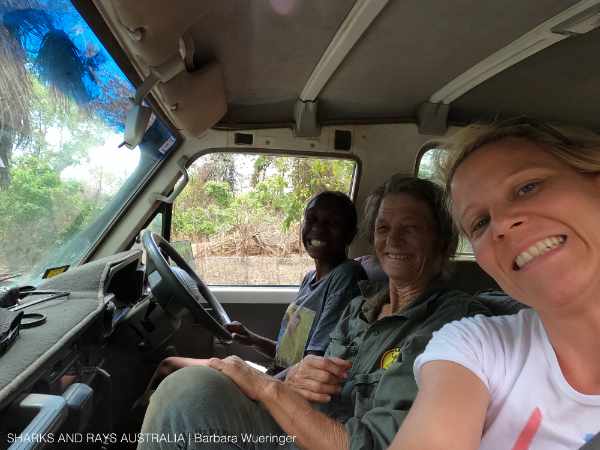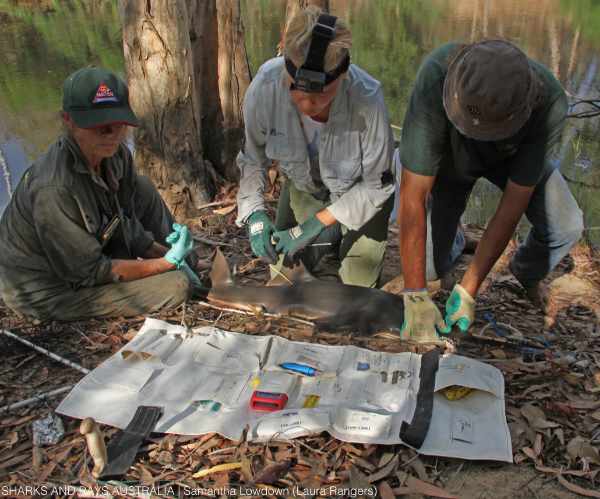Wrapping up 2020
We have heard it all too often, but what a year 2020 has been! Normally I get to spend about 3 months a year in the field, working with our amazing field assistants and Indigenous Rangers, visiting remote communities, and watching sunrises over the water. And while this lifestyle of intensive fieldwork in remote areas can be draining (and I am not going to lie about this, so many birthdays, weddings and other events from friends or family missed), it is also incredibly rewarding. On every field trip we run into unexpected challenges, see unexpected creatures and do what we love – conduct research with sharks and rays. It’s all pretty special.
2020 had almost none of this. While chocolate bananas melted in fire were dearly missed, we were also really lucky, as SARA is small enough to hibernate for a few months to survive lockdown. For most of the year, my students, collaborators and I, were working on SARA’s data sets – punching in data, identifying specimens, ensuring our GPS marks are correct, and matching images in our data base with individual animals. A lot of work was done in pyjamas, including two podcasts (see here and here).
While our intern and soon to be PhD student Nikki was stuck in New Zealand, where she maintained our sightings database from home, I managed to run 2 field trips, one to Kowanyama and the second one to Laura and the Lakefield (Rinyirru) National Park and spent a total of three weeks in the field.
In 2020 we also had to close our public call for field assistants. For most of the year, the Cape York Peninsula was a declared biosecurity zone with military checkpoints, managed by the Australian army and federal government. This arrangement was put in place to ensure that Covid would not enter vulnerable communities far away from the nearest hospital. And even when the Cape finally re-opened in July, we decided that we would only allow biologists from Far North Queensland to join our expeditions.
For our Kowanyama expedition, we were joined by dedicated biologists including James Donaldson from Northern Gulf NRM, Helen Penrose from Cape York NRM and Shane Ross from Shane Ross Photography. Fitzroy Lawrence from the Kowanyama Land and Sea Rangers brought out his whole ranger team to work with us in the field, which was truly fantastic. Working with a highly qualified field team who all have worked in Cape York before made this trip extremely productive.
For our second field trip in 2020 I was joined by the Laura Aboriginal Land and Sea Rangers under the lead of Susan Marsh. In 5 days, we drove 1200 km on dirt, sampled multiple spots in multiple rivers, generally worked 17 hrs a day and on our last day, Robert Ross from the Laura Rangers managed to catch a juvenile freshwater sawfish Pristis pristis on a handline, which we tagged, sampled and released. This was the first time a DNA sample was taken from this species on the east coast of Australia in about 15 years. While we had received submissions from the region before, many of them were without images and thus guided our sampling efforts, but are integrated in our citizen science database as ‘unconfirmed’ sightings, as we can only deduct the species from the location, but not confirm it.
Since about November, things have become busy again, and we have many projects in the pipeline for 2021. So stay tuned, follow us on social media (@SharksAndRaysAU), and most importantly stay safe.



